Outboard Fuel Pump Technology Evolution: From Mechanical to Electronic Revolution
The evolution of outboard fuel pump technology represents one of the most significant advancements in marine propulsion history. From simple mechanical diaphragm pumps to sophisticated electronic systems with multiple stages and integrated controls, this technological journey has dramatically improved engine performance, reliability, fuel efficiency, and environmental impact.
Understanding this evolution provides valuable context for boat owners, mechanics, and marine enthusiasts. Whether you're maintaining a vintage outboard with a mechanical pump or troubleshooting a modern electronic fuel injection system, knowing how and why these technologies developed helps you better understand your engine's needs and capabilities.
In this comprehensive guide, we'll trace the fascinating development of outboard fuel pump technology from its earliest incarnations to today's cutting-edge systems, and look ahead to emerging trends that will shape the future of marine propulsion.

Early Mechanical Fuel Pumps: The Foundation of Outboard Fuel Delivery
The story of outboard fuel pump technology begins with simple mechanical systems that laid the groundwork for all future developments.
The Origins: Gravity-Fed Systems
Before dedicated fuel pumps became standard, many early outboards (pre-1950s) relied on gravity to deliver fuel from tank to engine:
- Elevated tank placement - Fuel tanks were positioned above the engine to create natural flow
- Simple float bowls - Carburetors used float-controlled needle valves to regulate fuel
- Manual priming - Hand pumps or squeeze bulbs helped establish initial fuel flow
- Limited performance - These systems worked adequately only at low speeds and in calm conditions
The limitations of gravity-fed systems became increasingly apparent as outboards grew more powerful and boating activities more diverse. Engine starvation during acceleration, problems when tanks couldn't be mounted higher than engines, and inconsistent fuel delivery led to the development of mechanical fuel pumps.
Mechanical Diaphragm Pumps: A Revolutionary Step
The introduction of mechanical diaphragm pumps in the 1950s and 1960s represented a significant advancement in outboard fuel delivery:
Working Principle:
- Pulse-driven operation - Used pressure pulses from the engine's crankcase or cylinder
- Diaphragm mechanism - Flexible diaphragm moved by these pulses created pumping action
- One-way check valves - Controlled the direction of fuel flow
- Self-regulating pressure - Naturally limited to the pressure created by engine pulses
Key Advantages:
- No external power required - Operated solely from engine mechanical energy
- Simple, reliable design - Few moving parts meant fewer failure points
- Automatic operation - Pump output naturally matched engine demand
- Relatively inexpensive - Low manufacturing cost kept outboards affordable
- Serviceable design - Could be rebuilt with basic tools and skills
Limitations:
- Low pressure output - Typically limited to 3-7 PSI
- Engine-dependent - Only functioned when the engine was running
- Inconsistent delivery - Output varied with engine speed and condition
- Vulnerability to debris - Small passages easily clogged by contaminants
- Limited mounting options - Had to be positioned within reach of pulse source
Mechanical Pump Refinements
Throughout the 1960s and 1970s, manufacturers continuously improved mechanical pump designs:
- Improved diaphragm materials - More durable and fuel-resistant compounds
- Enhanced valve designs - Better sealing and more consistent operation
- Integrated fuel filters - Built-in screens to protect pump internals
- Dual-chamber designs - Some models featured two pumping chambers for increased output
- Better pulse tube routing - Improved pulse delivery for more consistent operation
These mechanical pumps remained the standard for carbureted outboards for decades, and variations of this basic design are still used in many smaller outboards today.


The Transition Period: Early Electric Pumps and Hybrid Systems
The late 1970s through the 1980s marked a transitional era in outboard fuel pump technology, as manufacturers began exploring electric pumps while refining mechanical systems.
The Introduction of Electric Fuel Pumps
Electric fuel pumps first appeared in outboards as auxiliary or support pumps, complementing rather than replacing mechanical pumps:
Early Applications:
- Priming pumps - Electric pumps used to establish fuel flow before starting
- Low-pressure lift pumps - Used to move fuel from remote tanks to the engine
- Backup systems - Provided redundancy for critical applications
- High-performance additions - Supplemental pumps for racing or high-output engines
Early Electric Pump Technology:
- Rotary vane designs - Early electric pumps often used rotating vanes
- Gear-type pumps - Precision gears created positive displacement
- Solenoid-driven pumps - Used electromagnetic action to move diaphragms
- Limited durability - Early models often had shorter service lives than mechanical pumps
- Modest pressure capabilities - Typically produced 4-8 PSI
Hybrid Systems: Bridging Two Technologies
As electronic control systems became more common in the 1980s, hybrid approaches emerged:
- Dual-pump configurations - Electric primer pump with mechanical main pump
- Electric boost pumps - Supplemented mechanical pumps during high-demand conditions
- Electrically controlled mechanical pumps - Added solenoids or controls to traditional designs
- Adaptive systems - Used sensors to modify fuel delivery based on conditions
The Catalyst for Change: Emission Regulations
A major driver in fuel pump evolution came from increasing environmental regulations:
- Early emission standards - Began requiring more precise fuel control
- Fuel efficiency mandates - Pushed for systems that reduced consumption
- Evaporative emission controls - Required pressurized fuel systems
- Consumer demand - Market preference for cleaner, more efficient engines
These regulatory pressures, combined with technological advancements in electronics and materials, set the stage for the revolutionary changes that would follow in the 1990s and beyond.

The EFI Revolution: Electronic Fuel Injection Transforms Outboards
The 1990s marked the beginning of a revolutionary shift in outboard fuel delivery with the widespread adoption of Electronic Fuel Injection (EFI) systems, which demanded entirely new approaches to fuel pump technology.
The EFI Imperative: Why Traditional Pumps Weren't Enough
Electronic Fuel Injection systems created new demands that mechanical pumps simply couldn't meet:
- Higher pressure requirements - EFI systems needed 30-60 PSI vs. 3-7 PSI for carburetors
- Consistent pressure - Required steady pressure regardless of engine speed
- Precise flow rates - Needed exact fuel delivery for proper air/fuel ratios
- Pre-start priming - System needed to pressurize before engine started
- Electronic control integration - Pumps needed to interface with engine management systems
Modern Electric Fuel Pump Designs
To meet these demands, entirely new electric pump designs were developed:
Roller-Cell Pumps:
- Design principle - Eccentric roller assembly creates chambers that change volume
- Advantages - Smooth operation, good durability, moderate pressure capability
- Applications - Common in early EFI outboards and as lift pumps
Gerotor Pumps:
- Design principle - Inner and outer gears with offset centers create pumping action
- Advantages - Excellent durability, good efficiency, moderate to high pressure
- Applications - Widely used in modern outboard EFI systems
Turbine Pumps:
- Design principle - Multi-stage impellers create pressure through centrifugal force
- Advantages - Very high pressure capability, excellent for high-performance applications
- Applications - High-output engines and direct injection systems
The VST System: A New Approach to Fuel Management
One of the most significant innovations in outboard fuel systems was the introduction of the Vapor Separator Tank (VST) or fuel module:
VST Components and Functions:
- Integrated design - Combined multiple fuel system functions in one assembly
- Low-pressure lift pump - Moves fuel from the main tank to the VST
- Vapor separation chamber - Removes air and vapor from the fuel
- High-pressure pump - Delivers pressurized fuel to the injectors
- Pressure regulator - Maintains precise system pressure
- Fuel cooler - Some systems include cooling to prevent vapor lock
- Fine filtration - Additional filtering to protect injectors
- Fuel level sensing - Monitors fuel level in the VST
Advantages of VST Systems:
- Vapor management - Effectively prevents vapor lock issues
- Consistent fuel delivery - Maintains steady pressure regardless of conditions
- Improved hot restart - Reduces starting problems in hot weather
- System protection - Integrated design protects sensitive components
- Return fuel handling - Efficiently manages fuel returned from pressure regulator
Brand-Specific Innovations
Major outboard manufacturers each developed their own approaches to EFI fuel pump systems:
Mercury Marine:
- EFI introduction - Early adopter of electronic fuel injection
- OptiMax direct injection - Required specialized high-pressure pump systems
- Verado technology - Supercharged engines with sophisticated fuel delivery
- Integrated cooling - Advanced thermal management of fuel system
Yamaha Outboards:
- HPDI system - High-Pressure Direct Injection with multi-stage pumps
- Compact VST designs - Space-efficient integrated modules
- Variable pressure systems - Adaptive pressure based on operating conditions
- Multi-pump redundancy - Some models feature backup pump systems
Evinrude/Johnson (BRP):
- FICHT direct injection - Early direct injection with specialized pumps
- E-TEC technology - Advanced direct injection with precise fuel control
- Stratified charging - Required sophisticated pressure management
Suzuki and Honda:
- Lean burn systems - Required precise fuel delivery at very lean mixtures
- Multi-point injection - Distributed injection requiring balanced pressure
- Automotive crossover technology - Adapted car fuel system technology

Direct Injection: The Next Level of Fuel Pump Technology
The early 2000s saw the introduction of direct injection technology to outboard engines, requiring another quantum leap in fuel pump capabilities.
Direct Injection Fundamentals
Unlike conventional EFI systems that inject fuel into the intake port, direct injection systems deliver fuel directly into the combustion chamber:
- Extreme pressure requirements - Needs 500-1,500 PSI vs. 30-60 PSI for conventional EFI
- Precise timing - Fuel must be injected at exact moments in the combustion cycle
- Stratified charge capability - Can create layered fuel mixtures for efficiency
- Atomization focus - Requires extremely fine fuel atomization
- Reduced emissions - Significantly lower hydrocarbon and carbon monoxide output
- Improved fuel economy - Typically 15-20% better than conventional EFI
Multi-Stage Pump Systems
To achieve the extreme pressures required for direct injection, multi-stage pump systems became necessary:
Typical Configuration:
- Low-pressure lift pump - Moves fuel from tank to VST (3-7 PSI)
- Medium-pressure pump - Pressurizes fuel within the VST (40-60 PSI)
- High-pressure pump - Boosts pressure for direct injection (500-1,500 PSI)
High-Pressure Pump Technologies:
- Piston pumps - Mechanical or cam-driven pistons create high pressure
- Intensifier systems - Use hydraulic principles to multiply pressure
- Crankshaft-driven pumps - Directly driven by the engine for precise timing
- Electronically controlled pumps - Pressure modulated by ECU for optimal delivery
Brand-Specific Direct Injection Approaches
Each manufacturer developed proprietary direct injection technologies with unique fuel pump requirements:
Mercury OptiMax:
- Air-assisted injection - Used compressed air to help atomize fuel
- Belt-driven air compressor - Created air pressure for the system
- Moderate fuel pressure - Required lower fuel pressure than some competitors
- Integrated pressure control - Electronic regulation of both air and fuel pressure
Yamaha HPDI (High Pressure Direct Injection):
- True high-pressure system - Operated at much higher pressures than OptiMax
- Five-pump system - Complex arrangement of multiple pumping stages
- Fuel cooling system - Managed heat generated by high-pressure pumping
- Variable pressure control - Adjusted pressure based on operating conditions
Evinrude E-TEC:
- Stratified combustion - Required precisely timed and placed fuel delivery
- Electronic pressure management - Sophisticated control of pump output
- Direct crankcase pressure utilization - Used engine pressure for efficiency
- Advanced injector design - Required specific pressure characteristics
Challenges and Solutions in Direct Injection Pumps
The extreme demands of direct injection created new challenges for fuel pump design:
- Heat management - High-pressure pumping generates significant heat
- Material limitations - Required new alloys and compounds for durability
- Precision manufacturing - Extremely tight tolerances needed for high pressure
- Filtration requirements - Even tiny particles could damage components
- Electrical demands - Higher power consumption for electric pump stages
- Noise and vibration - High-pressure operation created NVH challenges
Engineers addressed these challenges through innovations in materials science, precision manufacturing, thermal management, and electronic control systems.

Modern Fuel Pump Systems: Integration and Intelligence
Today's outboard fuel pump systems represent the culmination of decades of evolution, characterized by unprecedented integration with other engine systems and intelligent electronic control.
Integrated Fuel Management Systems
Modern outboards feature highly integrated fuel systems that combine multiple functions:
- Complete fuel modules - All-in-one assemblies containing multiple components
- Smart pressure regulation - Electronically controlled pressure based on demand
- Adaptive fuel delivery - Systems that learn and adjust to conditions
- Diagnostic capabilities - Self-monitoring with fault detection and reporting
- Emissions optimization - Fuel delivery precisely tuned for minimal emissions
- Multiple operating modes - Different fuel delivery profiles for various conditions
Electronic Control and Communication
The integration of fuel pumps with electronic control units (ECUs) has transformed their operation:
Advanced Control Features:
- Variable speed pump control - Pumps that run at different speeds based on demand
- Pulse-width modulation - Precise electronic control of pump output
- Closed-loop feedback - Systems that monitor and adjust based on results
- Predictive algorithms - Anticipate fuel needs based on operating patterns
- Integration with other systems - Communication with ignition, charging, and monitoring systems
Diagnostic Capabilities:
- Pressure sensors - Monitor actual fuel pressure in real-time
- Flow monitoring - Track fuel consumption and pump performance
- Current sensing - Detect pump electrical issues before failure
- Temperature monitoring - Prevent overheating and vapor lock
- Fault code generation - Create specific codes for different issues
- Limp home modes - Fallback operation when problems are detected
Material and Design Advancements
Modern fuel pumps benefit from significant advances in materials and manufacturing:
- Composite materials - Lightweight, corrosion-resistant components
- Advanced polymers - Better resistance to ethanol and other fuel additives
- Precision manufacturing - Computer-controlled production for tighter tolerances
- Modular design - Easier service and replacement of components
- Improved electrical motors - More efficient, cooler-running pump motors
- Noise reduction features - Dampening and isolation to reduce pump noise
Efficiency and Performance Improvements
The evolution of fuel pump technology has delivered significant benefits:
Efficiency Gains:
- Reduced electrical consumption - Modern pumps use 30-50% less power than early models
- Better fuel economy - Precise delivery improves combustion efficiency
- Lower emissions - Exact air/fuel ratios minimize pollutants
- Reduced heat generation - Less wasted energy as heat
Performance Enhancements:
- More consistent power delivery - Steady fuel pressure at all engine speeds
- Better throttle response - Immediate fuel delivery when demanded
- Improved cold starting - Precise priming and initial delivery
- Higher reliability - Fewer failures and longer service life
- Extended service intervals - Many modern pumps designed for the life of the engine

Future Trends: The Next Evolution in Fuel Pump Technology
As we look to the future, several emerging trends and technologies are poised to further transform outboard fuel pump systems.
Smart Technology Integration
The integration of advanced electronics and connectivity will continue to evolve:
- IoT connectivity - Fuel systems that communicate with diagnostic systems remotely
- Predictive maintenance - Systems that forecast service needs before failure
- Self-calibrating systems - Pumps that adjust their output based on learning algorithms
- User customization - Adjustable parameters through smartphone apps
- Fleet management integration - Fuel system data incorporated into fleet monitoring
Environmental Adaptations
Increasing environmental regulations will drive further innovations:
- Ultra-low emission systems - Even more precise fuel delivery for minimal pollutants
- Alternative fuel compatibility - Systems designed for biofuels and synthetic fuels
- Hydrogen fuel adaptation - Potential for hydrogen fuel cell or hydrogen combustion
- Carbon-neutral focus - Systems optimized for carbon-neutral fuel sources
- Evaporative emission elimination - Zero fuel vapor release designs
New Materials and Manufacturing
Advances in materials science and production techniques will enable new designs:
- 3D-printed components - Complex geometries impossible with traditional manufacturing
- Nano-materials - Extremely durable surfaces and components
- Biomimetic designs - Pump designs inspired by natural fluid movement systems
- Self-healing materials - Components that can repair minor damage
- Ultra-lightweight alloys - Reduced weight for better performance
Hybrid and Electric Integration
As marine propulsion evolves toward electrification, fuel pump systems will adapt:
- Hybrid-specific systems - Fuel pumps designed for intermittent use in hybrid outboards
- Range extender technology - Specialized fuel delivery for generators in electric boats
- Ultra-efficient small engines - Miniaturized fuel systems for compact generators
- Dual-purpose systems - Pumps that can handle multiple fluid types
- Energy recovery integration - Fuel systems that capture and utilize waste energy
Alternative Propulsion Technologies
Beyond traditional internal combustion, new propulsion methods will emerge:
- Fuel cell systems - Hydrogen delivery systems for fuel cell power
- Direct methanol fuel cells - Liquid fuel cells with specialized delivery needs
- Synthetic fuel optimization - Systems designed for carbon-neutral synthetic fuels
- Micro-turbine technology - Specialized fuel delivery for small marine turbines
- Hybrid hydrogen systems - Dual-fuel systems using hydrogen and traditional fuels
Expert Tip:
While future technologies will continue to evolve, the fundamentals of fuel system maintenance remain important. Even the most advanced systems require clean fuel, proper filtration, and regular inspection to perform reliably.

The Significance of Fuel Pump Evolution for Boat Owners
The technological journey of outboard fuel pumps has delivered numerous practical benefits for today's boaters:
Performance Improvements
- More horsepower per liter - Modern fuel delivery enables higher specific output
- Better fuel economy - 30-40% improvement over older carbureted engines
- Smoother operation - Consistent fuel delivery at all RPMs
- Enhanced throttle response - Immediate acceleration when needed
- Extended range - More miles per gallon means greater cruising distance
Reliability Enhancements
- Fewer breakdowns - Modern pumps have longer service lives
- Better diagnostic capabilities - Problems identified before failure
- Reduced maintenance - Many systems designed for extended service intervals
- Improved starting - More consistent cold and hot starting
- Better adaptability - Systems that compensate for fuel quality variations
Environmental Benefits
- Reduced emissions - Up to 90% lower emissions than older technologies
- Less fuel waste - More precise delivery means less unused fuel
- Oil reduction - Four-stroke and direct injection systems use less oil
- Quieter operation - Modern systems contribute to lower noise levels
- Fewer fuel spills - Better sealed systems reduce environmental contamination
User Experience Improvements
- Easier operation - No choke or priming required on modern systems
- Reduced maintenance complexity - Fewer adjustments needed
- Better information - Integrated monitoring provides operational data
- Lower operating costs - Fuel savings offset higher initial purchase price
- Greater confidence - More reliable systems mean less worry on the water
Conclusion: A Revolution in Marine Propulsion
The evolution of outboard fuel pump technology represents one of the most significant advancements in marine propulsion history. From simple mechanical diaphragm pumps to sophisticated electronic systems with multiple stages and integrated controls, this technological journey has transformed the boating experience.
Today's outboard engines deliver levels of performance, efficiency, and reliability that would have seemed impossible to early outboard pioneers. Much of this progress can be attributed to the remarkable development of fuel delivery systems that precisely meter fuel under all operating conditions.
As we look to the future, fuel pump technology will continue to evolve, adapting to new environmental requirements, alternative fuels, and changing boater expectations. The integration of smart technology, advanced materials, and innovative designs promises to further enhance the marine experience while reducing environmental impact.
Understanding this technological evolution helps boat owners better appreciate the sophisticated systems that power their vessels and make informed decisions about maintenance, upgrades, and future purchases.
At JLM Marine, we offer high-quality OEM-specification and premium aftermarket fuel pumps for all major outboard brands, spanning the full spectrum of technologies from traditional mechanical pumps to the latest electronic systems. Our products are manufactured to strict quality standards in ISO9002 certified facilities, ensuring reliable performance for your specific outboard model.
Frequently Asked Questions About Outboard Fuel Pump Technology
Can I upgrade an older outboard with newer fuel pump technology?
Upgrading an older outboard with newer fuel pump technology is possible in some cases, but the extent of possible upgrades depends on your specific engine model and its original design. The most common and straightforward upgrade is replacing an original mechanical pump with a higher-quality aftermarket version that uses more modern materials and manufacturing techniques. This can improve reliability without requiring significant modifications. For carbureted engines, some aftermarket companies offer electric fuel pump conversion kits that replace the mechanical pump with an electric one, providing more consistent fuel pressure and easier starting. However, converting a carbureted engine to electronic fuel injection is much more complex and typically requires specialized kits designed for your specific engine model. These conversions involve not just the fuel pump, but also adding injectors, sensors, an ECU, and wiring harness. For most recreational boaters, the cost and complexity of a full EFI conversion may outweigh the benefits. If you're considering an upgrade, consult with a marine mechanic who specializes in your engine brand to understand the available options, costs, and potential benefits for your specific situation.
How have fuel pump advancements affected fuel efficiency in outboards?
Fuel pump advancements have dramatically improved outboard fuel efficiency through several key mechanisms. Modern electronic fuel pumps enable precise fuel metering that delivers exactly the right amount of fuel for current operating conditions, eliminating the rich-running tendency of carbureted engines. This precision can improve fuel economy by 15-30% compared to older systems. Direct injection technology, made possible by advanced high-pressure pumps, sprays fuel directly into the combustion chamber at exactly the right moment, improving combustion efficiency by up to 20% over conventional EFI. Variable pressure control systems adjust fuel pressure based on engine demand, optimizing delivery across the entire operating range. Modern pumps also enable sophisticated engine management strategies like lean burn operation, stratified charging, and multiple injection events per cycle, all of which improve efficiency. Additionally, the elimination of carburetor jets and passages reduces restriction in the fuel system, allowing better atomization and more complete combustion. The real-world impact is significant—a modern four-stroke outboard with electronic fuel injection typically uses 30-40% less fuel than a comparable carbureted two-stroke engine from the 1990s while delivering better performance and dramatically lower emissions.
What maintenance differences exist between mechanical and electronic fuel pumps?
Mechanical and electronic fuel pumps have significantly different maintenance requirements and characteristics. Mechanical pumps typically require more frequent attention but are simpler to service. They can often be rebuilt with diaphragm kits, have accessible external components, and provide visual indications of problems like fuel leakage. Their service intervals are typically shorter (200-300 operating hours), and they're more susceptible to fuel quality issues and debris. In contrast, electronic pumps generally require less frequent maintenance but are more complex when service is needed. They're usually designed as sealed units that aren't rebuildable, requiring complete replacement when they fail. Their service intervals are much longer (often 1,000+ hours), and they include integrated filtration and pressure regulation. Electronic pumps require proper electrical system maintenance, as voltage issues can affect performance. They also need higher-quality filtration due to their sensitivity to contamination. Diagnostic approaches differ significantly—mechanical pump issues are typically diagnosed through visual inspection and pressure testing, while electronic pump problems often require electronic diagnostics and specialized tools. For boaters, the key difference is that mechanical pumps may require more frequent but simpler maintenance, while electronic pumps offer longer service intervals but typically need professional service when problems occur.
How are modern fuel pumps adapting to ethanol-blended fuels?
Modern fuel pumps have evolved significantly to address the challenges posed by ethanol-blended fuels. Manufacturers have implemented several key adaptations to ensure reliability and performance. Material improvements are perhaps the most important change—modern pumps use ethanol-resistant polymers and elastomers for diaphragms, seals, and O-rings that resist the solvent effects of ethanol. Stainless steel and anodized aluminum components have replaced materials susceptible to ethanol corrosion. Enhanced filtration systems protect pumps from the increased debris that ethanol can introduce by dissolving old deposits. Many modern systems incorporate water management features within the Vapor Separator Tank (VST) to address ethanol's water-attracting properties. Thermal management has improved with better cooling and heat dissipation to prevent vapor lock issues that ethanol can exacerbate. Electronic control systems now include adaptive fuel mapping that can compensate for ethanol's different combustion characteristics. Some advanced systems even incorporate fuel composition sensors that can detect ethanol content and adjust accordingly. These adaptations have significantly improved reliability with ethanol fuels, though manufacturers still recommend additional maintenance precautions when using ethanol blends, including more frequent filter changes, fuel system inspections, and the use of marine-specific fuel stabilizers during storage periods.
Hi—I’m Jim Walker
I grew up in a Florida boatyard, earning pocket money (and a few scars) by rebuilding outboard carbs before I could drive. That hands-on habit carried me through a Ph.D. in mechanical engineering, where I studied how salt water quietly murders metal.
I spent ten years designing cooling systems for high-horsepower outboards, then joined JLM Marine as CTO. We bench-test every new part in the lab, but I still bolt early prototypes onto my own 23-foot skiff for a weekend shake-down— nothing beats real wake and spray for finding weak spots.
Here on the blog I share the fixes and shortcuts I’ve learned so your engine—and your day on the water—run smooth.

For Outboard Owners:
To assist you in maintaining and repairing your marine engines, we hope the following resources may be of use:
-
Fuel Pumps from JLM Marine
-
Fuel Pump Kits from JLM Marine
About JLM Marine
Founded in 2002, JLM Marine has established itself as a dedicated manufacturer of high-quality marine parts, based in China. Our commitment to excellence in manufacturing has earned us the trust of top marine brands globally.
As a direct supplier, we bypass intermediaries, which allows us to offer competitive prices without compromising on quality. This approach not only supports cost-efficiency but also ensures that our customers receive the best value directly from the source.
We are excited to expand our reach through retail channels, bringing our expertise and commitment to quality directly to boat owners and enthusiasts worldwide.

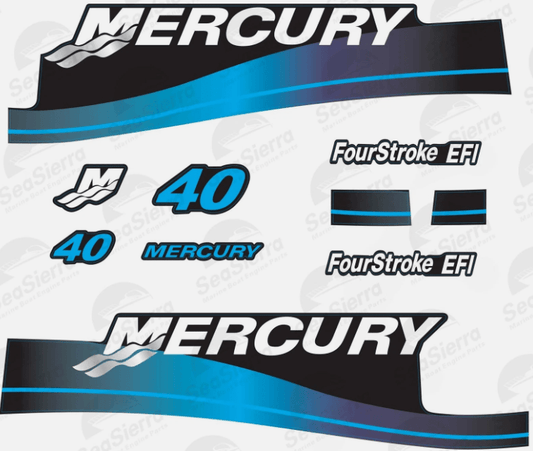
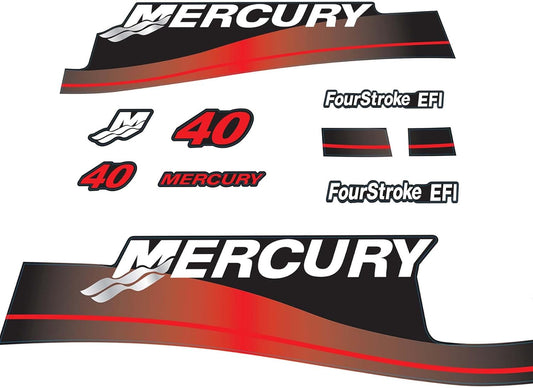
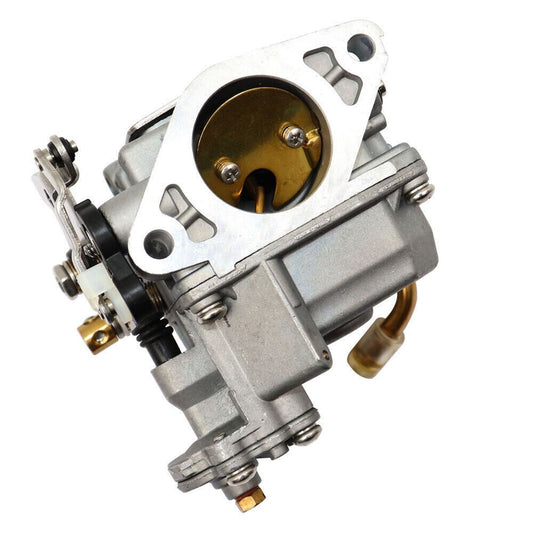
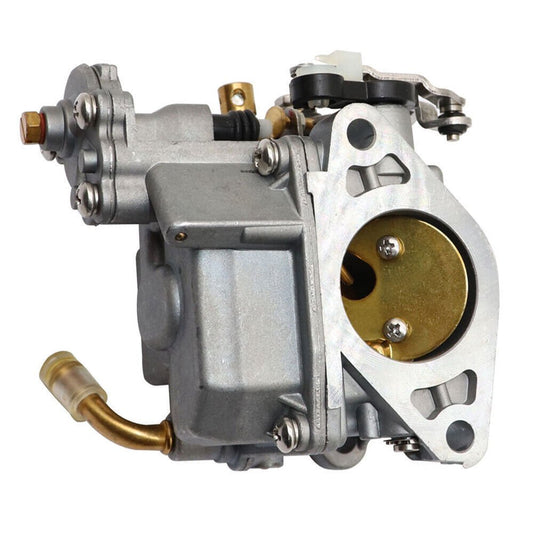
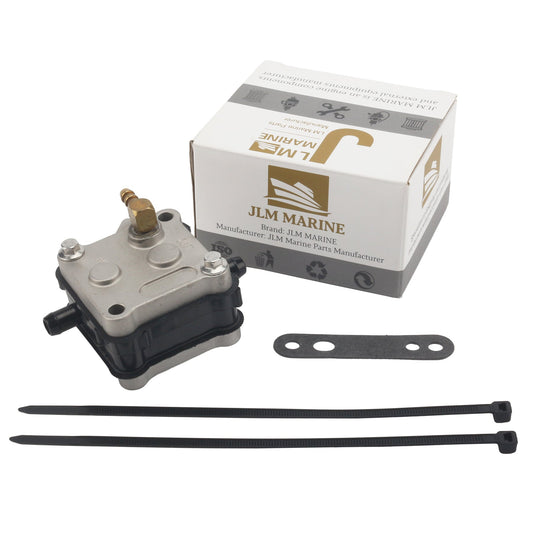
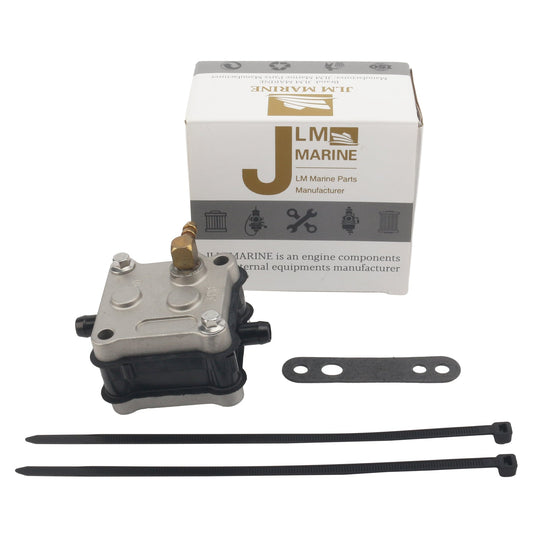
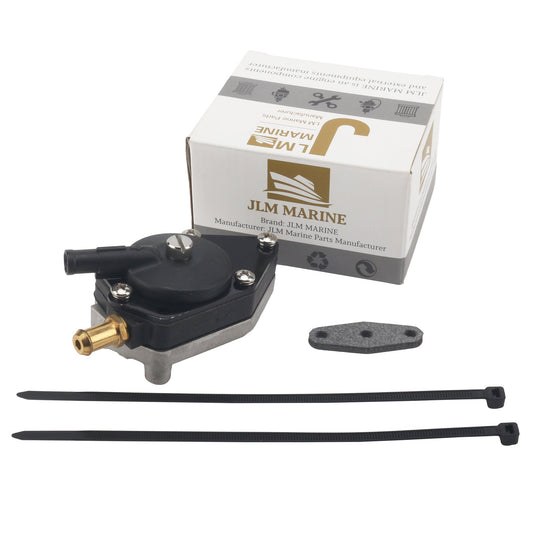
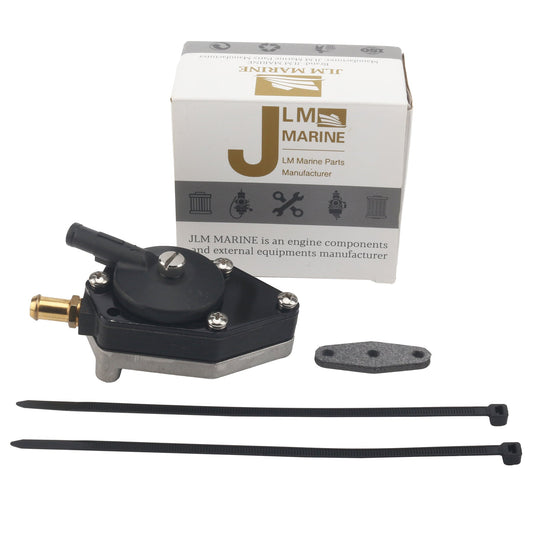
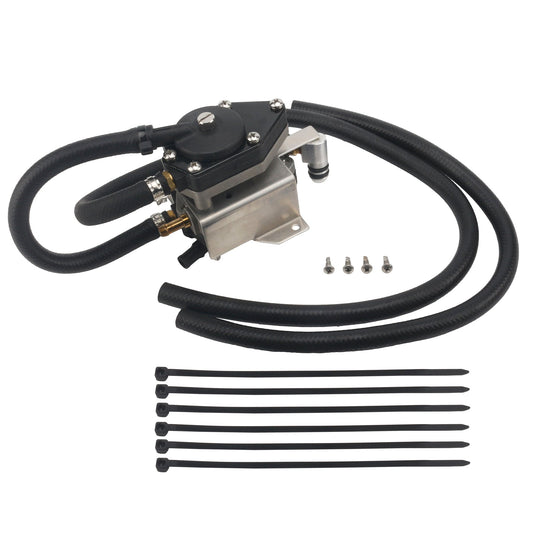
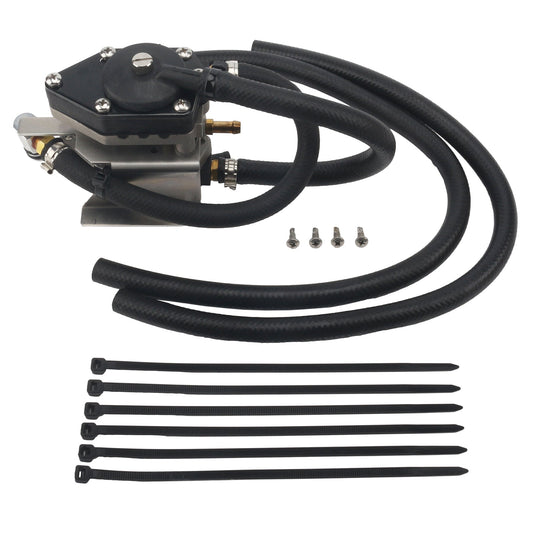
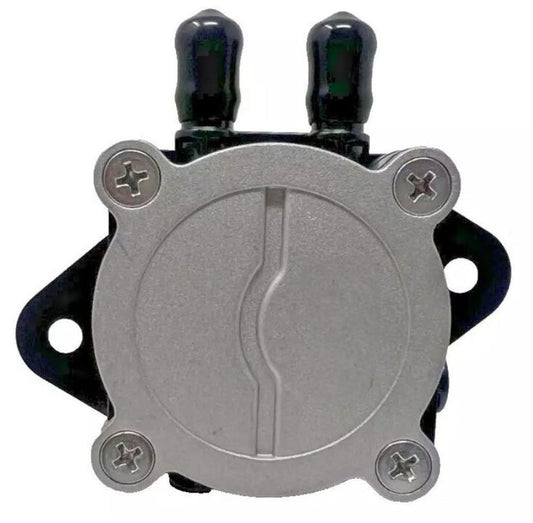
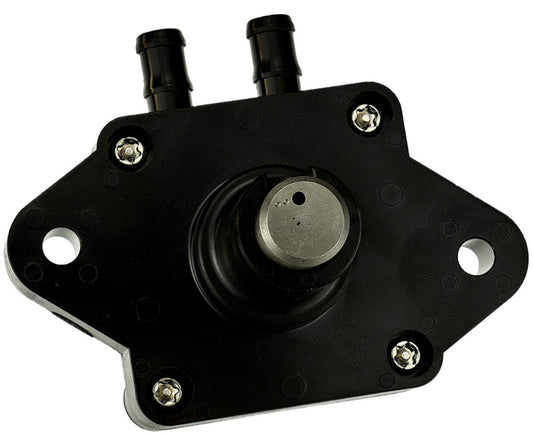
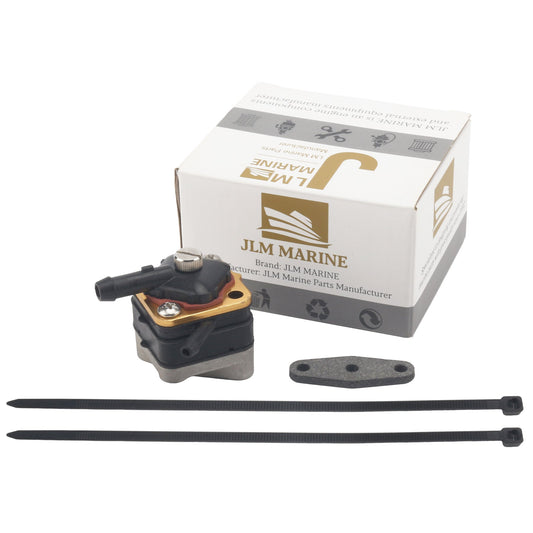

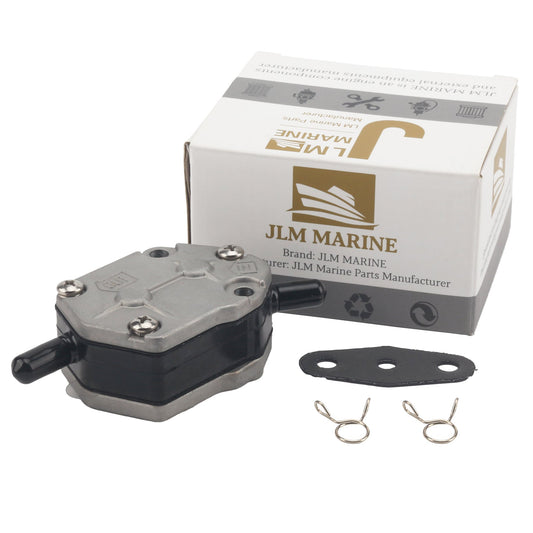
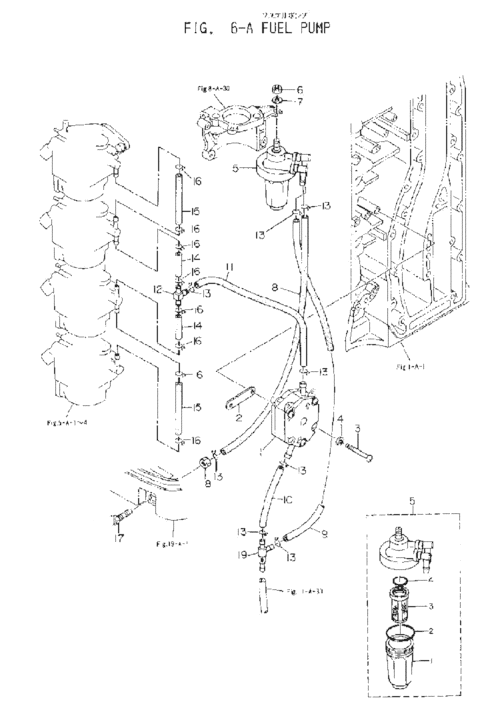
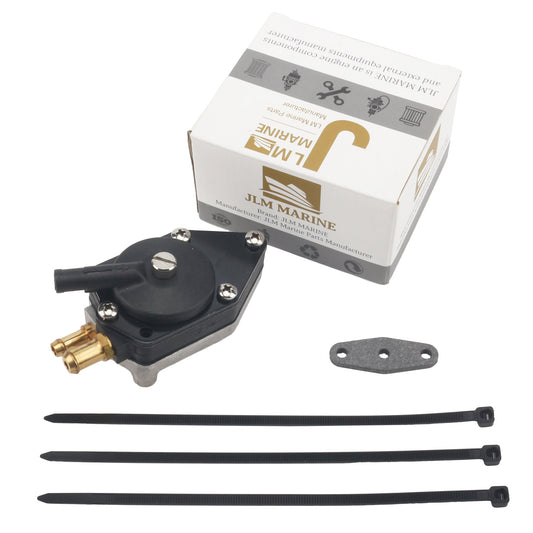
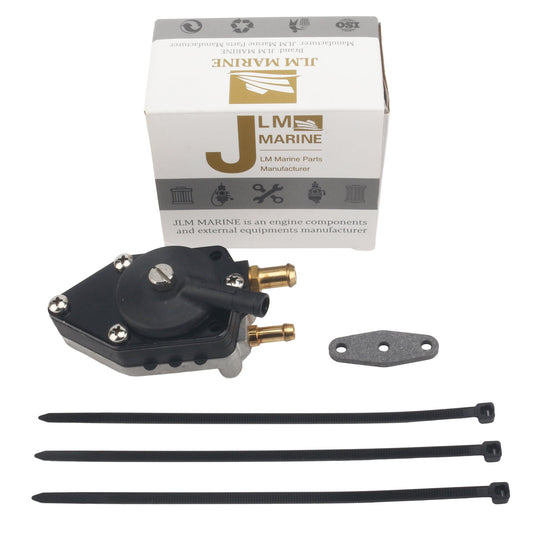
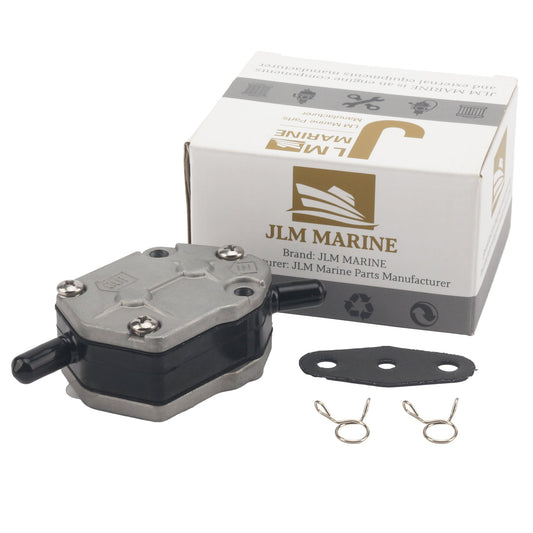

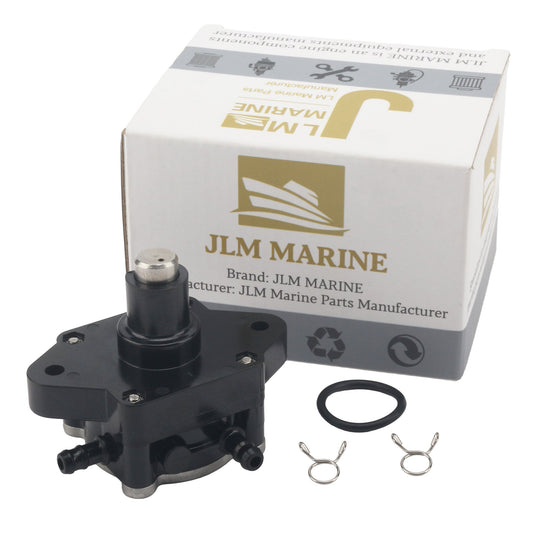
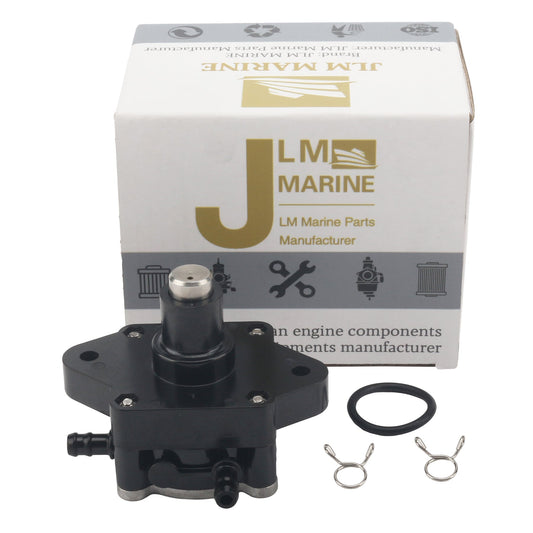
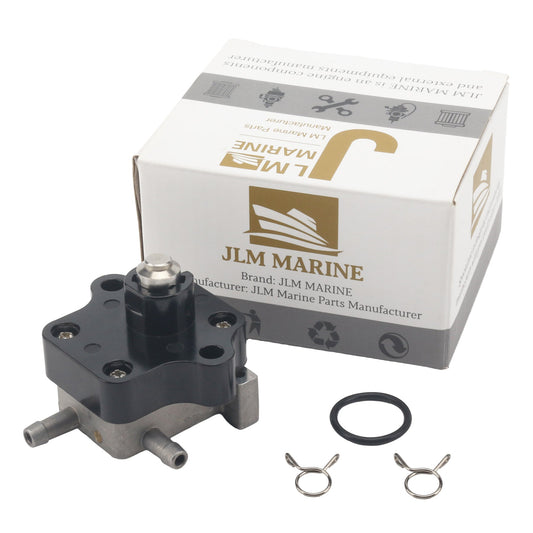
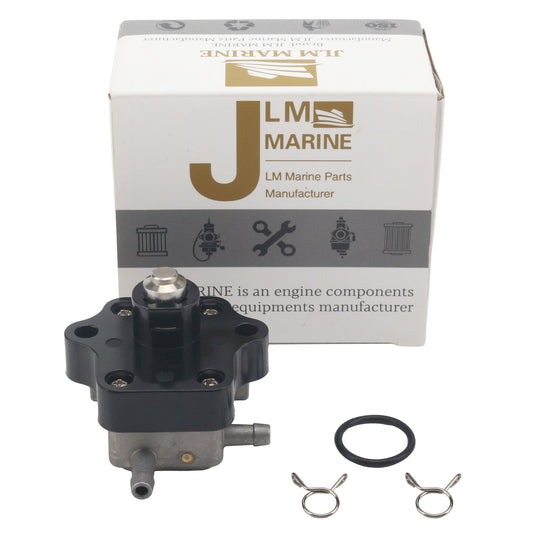
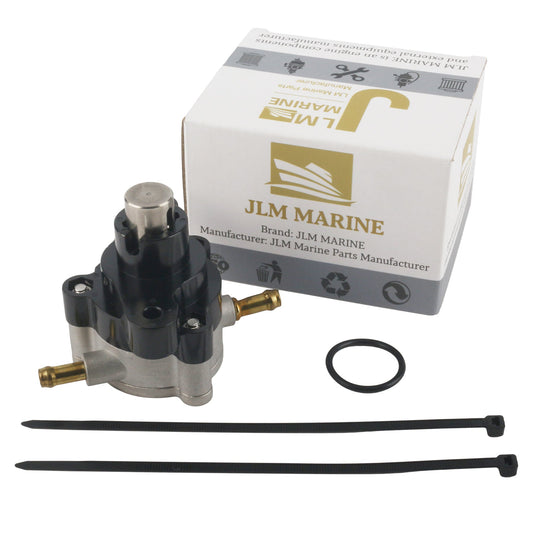
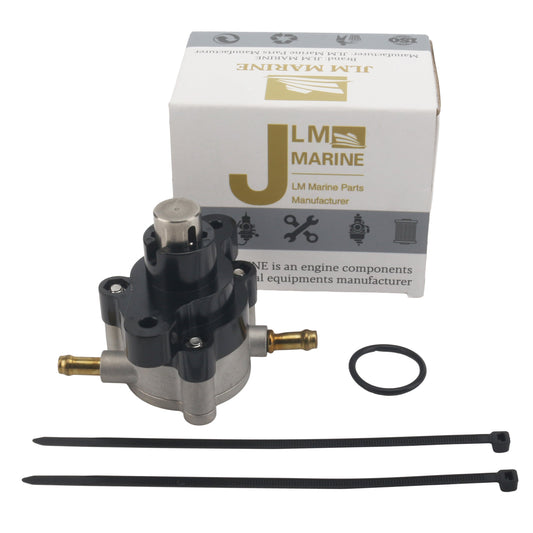
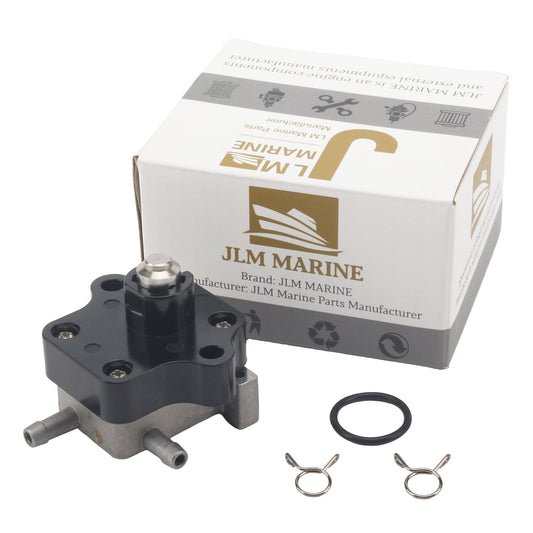
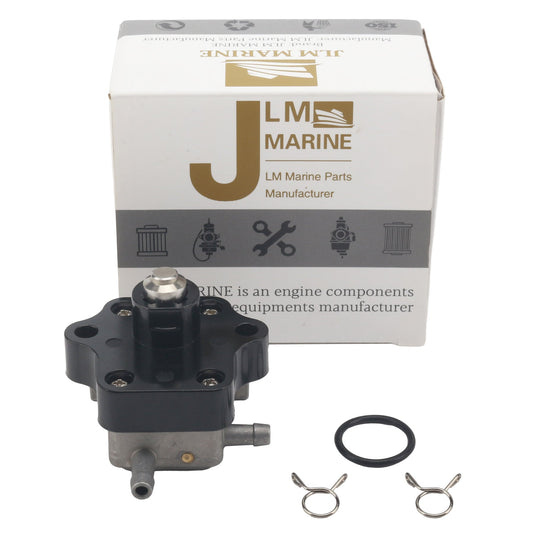

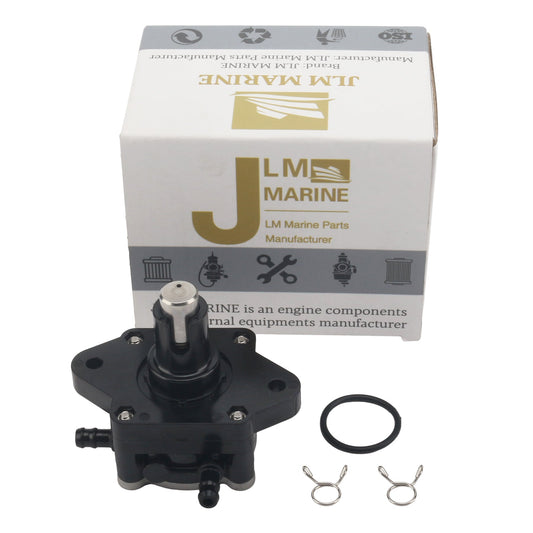

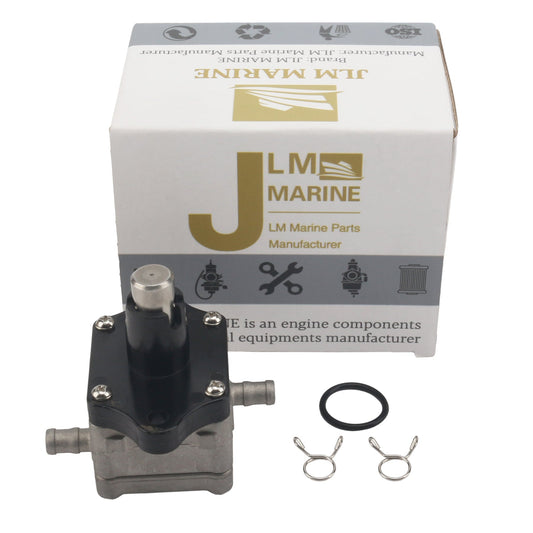
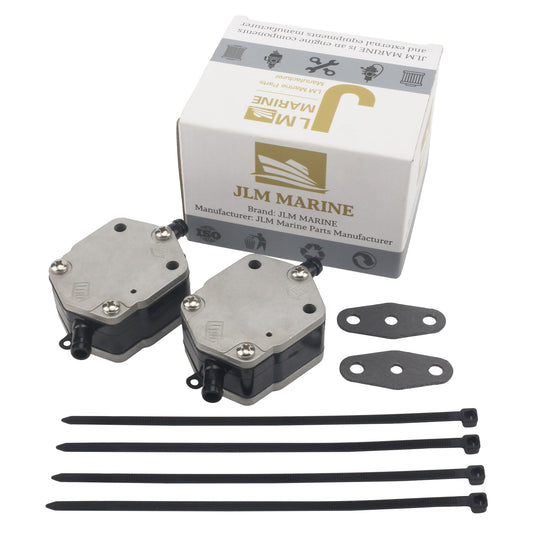
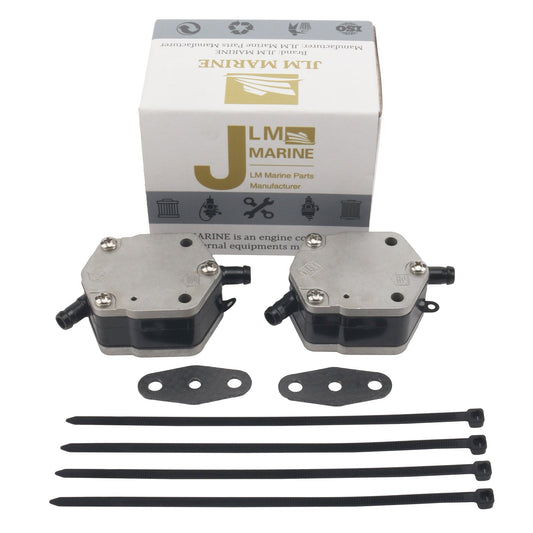
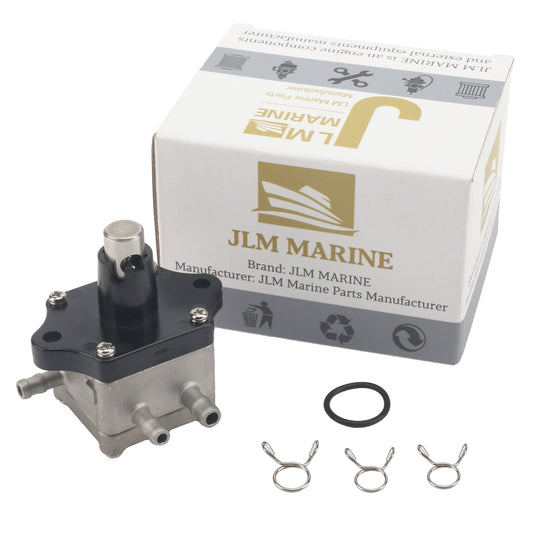
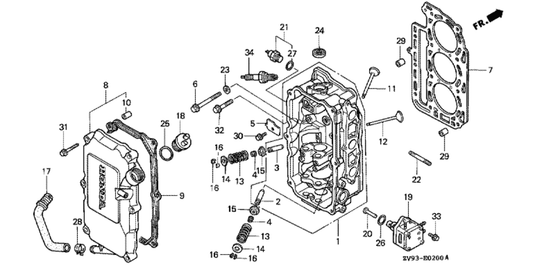
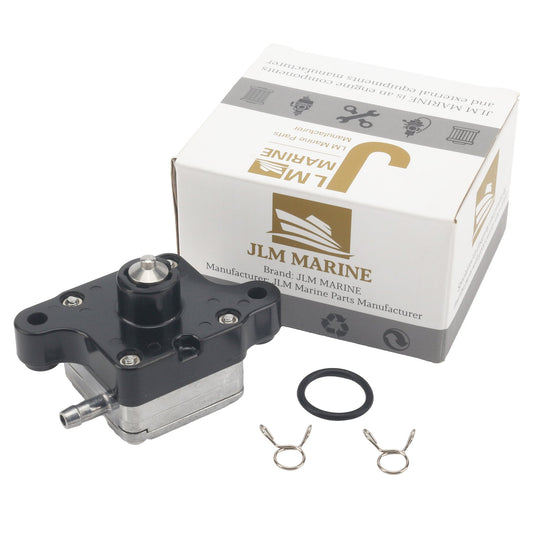
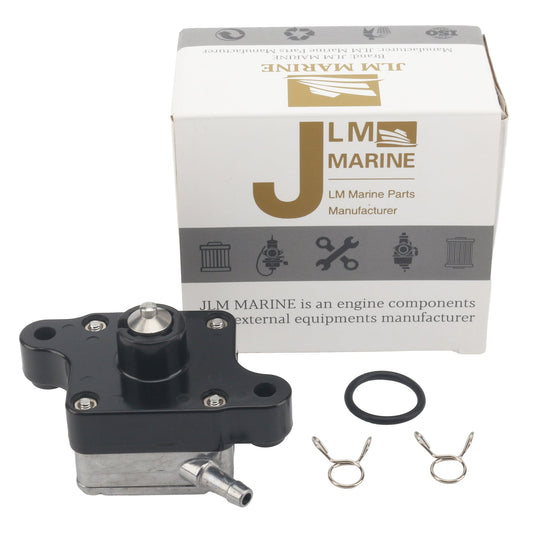
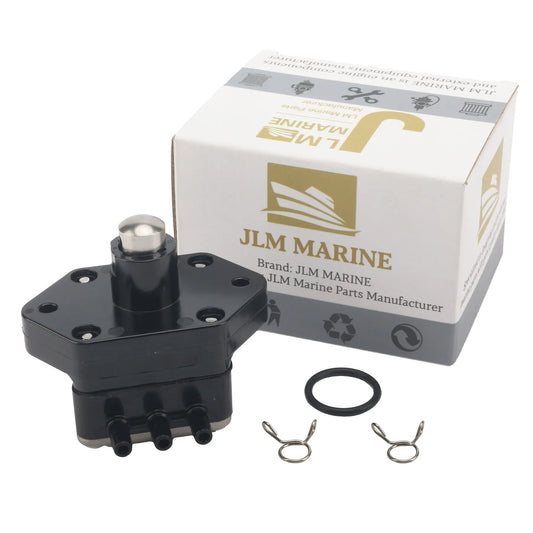


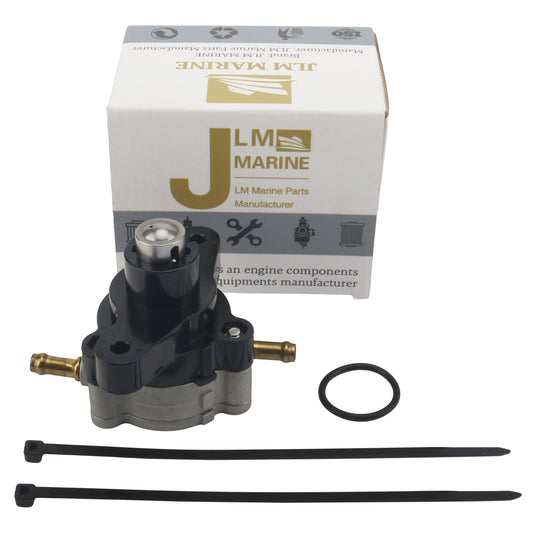

Leave a comment
Please note, comments need to be approved before they are published.